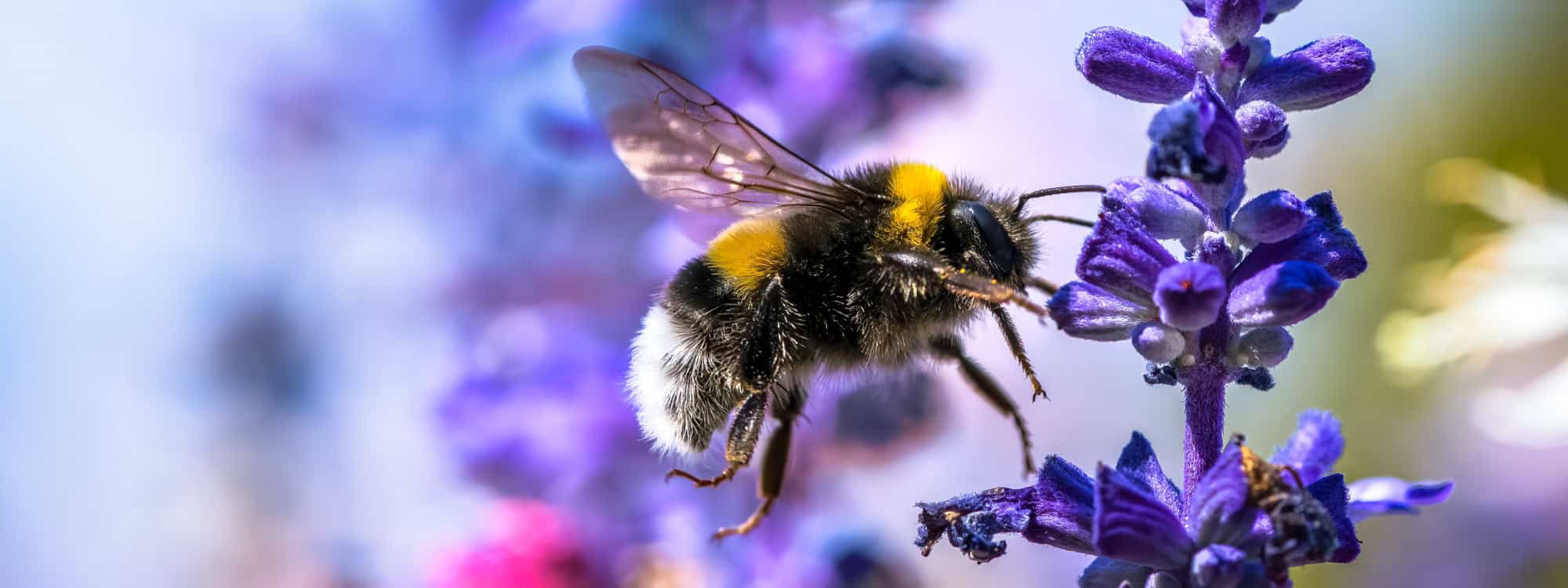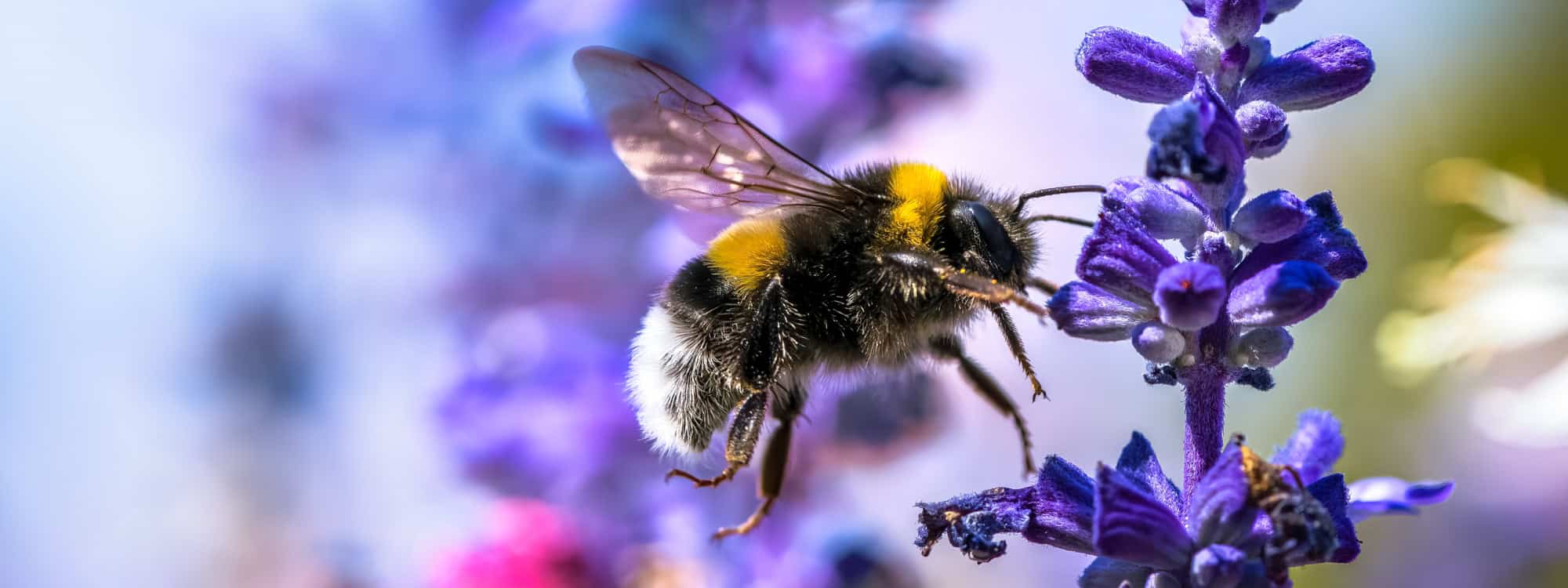Bumblebee
Identification:
Bumblebees, commonly found in Muskoka, are large, fuzzy insects with a distinctive black and yellow coloration, typically ranging from 10 to 25 mm in length. They have round, robust bodies covered in dense hair, which helps them collect pollen. Unlike Yellowjackets, bumblebees are much gentler and generally only sting when provoked. They are easily recognizable by their size and their characteristic buzzing sound as they fly from flower to flower, making them a beloved sight in gardens and wildflower meadows.
Habitat:
In Muskoka, bumblebees typically build their nests underground, often in abandoned rodent burrows or other sheltered spaces like hollow logs. They are social bees, living in colonies that can range from 50 to 500 individuals. Bumblebees prefer habitats with abundant flowers for foraging, including gardens, forests, and fields. While they are not as likely to nest near human homes as Yellowjackets, their presence in outdoor areas can increase during the warmer months when flowers are in bloom.
Diet:
Bumblebees primarily feed on nectar and pollen from a variety of flowering plants. They are crucial for pollinating wildflowers, fruits, and vegetables, contributing significantly to the health of local ecosystems. Bumblebees are particularly effective at pollinating plants with tubular flowers, such as foxglove, lupine, and certain fruit blossoms. Their diet consists of nectar for energy and pollen for protein, and they play an essential role in maintaining plant biodiversity in Muskoka.
Behavior:
Bumblebees are social insects, living in colonies led by a queen. Worker bees forage for nectar and pollen, while drones are responsible for mating with the queen. Bumblebees are not aggressive and typically only sting in defense of their nest. Their foraging habits include “buzz pollination,” where they vibrate flowers to release pollen. This technique makes them excellent pollinators, particularly for plants that other bees might not be able to pollinate. Bumblebees are most active in the spring and summer and are crucial to pollination in both wild and cultivated environments.
Prevention:
To prevent attracting bumblebees to your home, avoid disturbing their nests, which are often located underground or in the hollows of trees. It’s also important to avoid leaving food, especially sugary items, outdoors in the summer, as bumblebees are attracted to sweet scents. While bumblebees are generally non-aggressive, if you notice a nest near your home, it’s best to leave it undisturbed or consult with a local beekeeper or pest control expert for safe removal.
Control:
Bumblebee control is typically unnecessary, as these bees are beneficial pollinators and pose little threat to humans. If a bumblebee nest is in a problematic location, the best approach is to contact a professional who can safely relocate the nest. Unlike Yellowjackets, bumblebees do not defend their nests aggressively and are usually harmless unless directly threatened. By preserving bumblebee populations and encouraging safe removal when necessary, Muskoka residents can support local pollination efforts while ensuring their safety and enjoyment of outdoor spaces.


